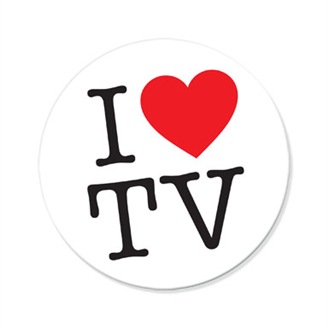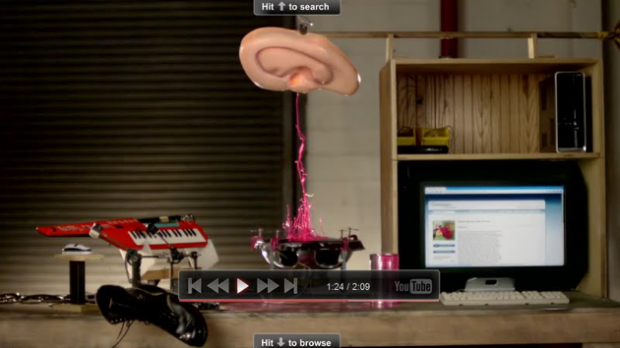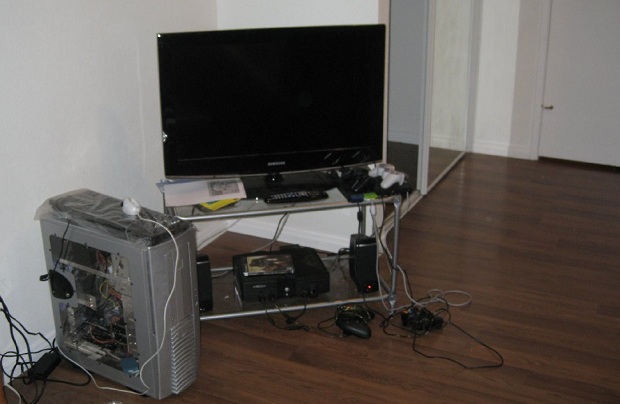 Listen, I hate forking over $100 a month for my TV, too. I also wholeheartedly agree with The Consumerist picking Comcast as the worst company in America. But they still get my money every month and just like the vast majority of people who pay for their TV, that’s not going to change anytime soon. There simply isn’t anything that replicates the experience and is free or low-cost. No one, not even Google, Hulu or Netflix, will cause America to part ways with the subscription-based TV model.
Listen, I hate forking over $100 a month for my TV, too. I also wholeheartedly agree with The Consumerist picking Comcast as the worst company in America. But they still get my money every month and just like the vast majority of people who pay for their TV, that’s not going to change anytime soon. There simply isn’t anything that replicates the experience and is free or low-cost. No one, not even Google, Hulu or Netflix, will cause America to part ways with the subscription-based TV model.
The newest contender in the field is YouTube Leanback, which cleans up the interface and makes for a much more relaxed viewing experience. As the name implies, the interface is perfect for casual YouTube use, either from your couch or office chair. As Jason pointed out when the product launched yesterday, its aim is to increase the average YouTube viewing time. Currently it’s 15 minutes per day compared to the 5 hours netted by traditional TV.

It will probably do just that, seeing as Leanback is YouTube’s Google TV offering. The dozens of first adopters that jump on that ship right away will no doubt spend hours using the interface — until the novelty wears off.
YouTube obviously has a different draw than traditional TV programs. Most of the videos are short clips, designed for the short attention span of the average Internet user. Leanback is designed to counter this by auto-playing another video after one finishes playing.
Great, but do you think that YouTube content alone can sufficiently replace cable? Of course not. But even Hulu Plus or Netflix Streaming has the goods to do that and likely never will.
 Hulu and Netflix have impressive libraries. I’m not going to debate that, but there are two huge things missing: the joy of channel surfing and most importantly, live TV. These two items, combined with the technical aspects of cable TV alternatives will keep the masses from making the switch away from cable and satellite companies for years.
Hulu and Netflix have impressive libraries. I’m not going to debate that, but there are two huge things missing: the joy of channel surfing and most importantly, live TV. These two items, combined with the technical aspects of cable TV alternatives will keep the masses from making the switch away from cable and satellite companies for years.
Leanback has got one thing right: watching TV is a passive activity. Channel surfing is something that’s supposed to be done while your mind is on autopilot. That’s why videos are automatically selected and played. That’s not the case in Hulu or Netflix primarily because the content is different. Sure, Hulu Desktop autoplays something when its launched, but it’s mostly always an advertisement of some sort, not actually TV content. Users have to go out and actively decide what program to watch.
Netflix streaming is even worse for lazy people. On most streaming-capable devices, users actually have to pre-select content they want streamed on their PC. Do you really think your mother-in-law is going to do that?
Step one, fire up IE6 and wait 5 minutes for all the toolbars to load. Step two, call you because she forgot the web address. Step three, navigate to the Netflix website and log in (if she remembers her password) Step four, discover that the program she wants to watch isn’t available for streaming.
Cable and satellite companies aren’t going anywhere. It’s not even just the baby boomers and greatest generation keeping them around, as is the case with print media. Both Gen X and Gen Yers are cable subscribers too. Opting for these cable alternatives isn’t generational like reading the newspaper, it’s more about the demographics.

Actually, some people already canceled their cable and use sites like Hulu and Netflix exclusively (they are probably flaming me in the comments right now). They might have a Mac Mini or even full desktop sitting in their living rooms connected to their HDTV. But most of these people are in this certain demographic that spans multiple generations and are comfortable with technology. Those that try to follow the same path but aren’t computer savvy (like my in-laws) more often than not end up back paying for traditional TV.
You, me, and our geeky friends would probably be happy with the grand trifecta of streaming content from a Hulu-like site, live HDTV from over-the-air, and YouTube for shits and giggles. But my wife would kill me if I canceled our cable and replaced it with something like that — unless it worked flawlessly.
That’s the key, really. The device would have to work as well as TiVo, all of the time, for every program. It cannot be the Android of TV appliances. Users must be able to sit down and operate it with little or no effort. They must be able to hit a channel button and skip to another program immediately. Just like in radio, dead air would kill the device.
I know I’m painting a poor image of the average TV watcher. But it’s the truth. TV is now the great American pastime and people are passionate about it. I know I am. I once told someone that watching TV was my hobby and at the time it was. I later discovered woodworking, but that’s another post.
Pay TV isn’t going anywhere. In fact, it might become more popular before it declines as, ironically, cable companies improving their streaming libraries. Not even Google TV will make a dent in Comcast’s juicy bottom line. People are lazy, don’t like change, and simply do not want to give up silly luxuries. If the recession didn’t kill cable, nothing will anytime soon.